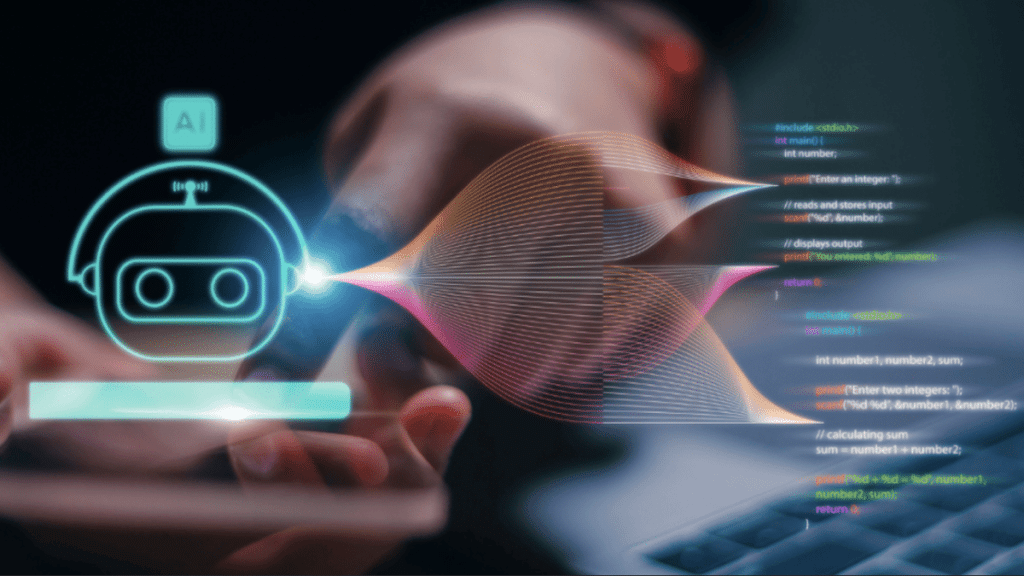Imagine asking a virtual assistant a question, showcasing a picture, and describing it with your voice in one seamless interaction. Welcome to the future of AI chatbots, where text, voice, and visual data combine to create a richer, more immersive experience.
As AI continues evolving, chatbots are no longer confined to text-based responses. Instead, they are transforming into multi-modal agents capable of simultaneously understanding and processing different data types.
Convenience is not the only benefit of this technological advancement. It is also about creating AI interactions that feel more human-like, intuitive, and effective.
Here, you will explore how AI offers unprecedented levels of personalization, accessibility, and efficiency in conversations with chatbots.
Understanding Multi-Modal AI
Artificial Intelligence (AI) is becoming vital to everyday tasks, enabling human-like conversational touch in chatbot interaction. It was once restricted to text-based communication, and these AI agents are now developing to include speech and visual data, among other modalities. “Multi-modal AI” refers to this convergence, completely changing how we engage with technology.
Thanks to multi-modal AI, chatbots can now process and comprehend data from multiple sources, providing a more thorough and interesting user experience. These chatbots can combine text, speech, and visual aspects to provide visual aids, natural language understanding, and personalized suggestions.
- Provide Personalized Recommendations: The AI chatbot gives personalized recommendations that correspond with the user’s preferences based on their voice and facial expressions.
- Offer Visual Assistance: The chatbot could provide step-by-step instructions with accompanying images or videos if a user struggles with a task.
- Enable Natural Language Understanding: By analyzing text and voice input, the chatbots better understand the context of a conversation and respond more appropriately.
In addition, intelligent search capabilities solve several problems, including identifying relevant data and enhancing chatbot responses, making interactions more efficient and personalized.
The Challenges of Multi-Modal AI
While multimodal AI holds significant promise, it is not without its challenges. Certain obstacles must be overcome to utilize this technology to its greatest potential effectively. Here are some of the common challenges:
1. Data Scarcity
Lack of data is one of the main obstacles to developing multi-modal AI systems. Unlike text-based AI, which can be trained on vast amounts of readily available data, multi-modal AI requires datasets that combine text, voice, and visual information.
Because fewer of these datasets are available, it is more challenging to train AI models successfully. Furthermore, the diversity and quality of the data are essential for developing AI systems that perform effectively in various settings.
2. Technical Complexity
Another major snag is the technological complexity of merging different data types. Multi-modal AI requires sophisticated algorithms that accurately process and correlate text, voice, and visual inputs.
Advanced machine learning algorithms are required for this integration to provide coherent responses that smoothly blend many modalities. For instance, AI must comprehend the relationship between spoken words and visual objects or actions.
3. Ethical Considerations
As with all AI technologies, multi-modal AI presents ethical questions, especially those related to bias and privacy. Data privacy and security are crucial since these technologies frequently handle sensitive personal information, like voice recordings and visuals.
Furthermore, bias must be avoided in the design of multi-modal AI systems, as this can result from imbalanced training data or faulty algorithms. Artificial intelligence (AI) bias can provide unfair or discriminating results, especially in law enforcement, healthcare, and hiring ecosystem.
The Benefits of Multi-Modal AI Chatbot
Despite these challenges, the benefits of multi-modal AI chatbots are substantial, making them a valuable investment for businesses and organizations.
1. Enhanced User Experience
These chatbots integrate text, speech, and visual components to provide a more engaging and user-friendly interface. Users can converse organically, offering textual or visual input and getting customized answers.
2. Improved Accessibility
Multi-modal virtual assistants can be more accessible to individuals with hearing impairments who can rely on text-based interactions and visual clues. In contrast, those with vision impairments can benefit from voice input and audio output.
3. Increased Efficiency
Multi-modal AI chatbots can increase productivity and efficiency by automating processes and delivering pertinent information on time. This is especially helpful for customer support, as chatbots can quickly resolve and manage common questions.
4. Greater Personalization
Multimodal AI chatbots can provide highly tailored services and recommendations by assessing numerous data sets. This degree of personalization increases user loyalty and happiness.
The Future of Multi-Modal AI Chatbots
Multi-modal AI chatbots demonstrate a promising outlook. As technology develops, we may anticipate seeing chatbots that are even more intelligent and powerful, able to combine text, audio, and visual data with ease. This will result in creative applications in several fields, such as customer service, education, finance, and healthcare.
Multimodal AI-powered virtual assistants might help patients in the healthcare industry manage their ailments, make appointments, and obtain medical information. In education, they could offer interactive learning opportunities, individualized tutoring, and question-answering.
Conclusion
Multi-modal AI chatbots are revolutionizing human-like computer interaction by combining written content (text), voice, and visual data. As technology develops, intelligent and adaptable chatbots increasingly improve our lives in multiple ways.

